Keris iaitu sejenis senjata pendek yang digunakan sejak lebih 600 tahun dulu pasti tidak dapat dipisahkan daripada warisan galur bangsa Melayu.
Senjata ini memang unik di dunia Melayu dan boleh didapati di kawasan berpenduduk Melayu seperti Malaysia, Indonesia, Singapura, selatan Thailand; Mindanao, Filipina serta Brunei.
Menurut Wikipedia, nama yang digunakan untuk keris berbeza mengikut daerah, misalnya sundang di Mindanao, kedutan di Bali, kujang di Jawa Barat dan kareh di Sumatera.
Perkataan keris dikatakan berasal daripada bahasa Jawa Kuno iaitu malang kerik yang bermaksud bercekak pinggang. Ini merujuk kepada figura orang bercekak pinggang pada hulu keris pada peringkat awal.
Keris digunakan untuk mempertahankan diri, misalnya sewaktu bersilat dan sebagai alat kebesaran diraja. Senjata ini juga adalah lambang kedaulatan orang Melayu dan keris paling masyhur adalah keris Taming Sari iaitu senjata Hang Tuah, pahlawan Melayu terkenal.
Senjata itu dikatakan berasal dari Kepulauan Jawa dan sudah digunakan antara abad kesembilan dan ke-14. Ia terbahagi kepada tiga bahagian iaitu mata, hulu dan sarung.
Keris sering dikaitkan dengan kuasa mistik oleh orang Melayu pada zaman dulu. Antara lain, wujud kepercayaan bahawa keris mempunyai semangatnya yang tersendiri.
Keris menurut amalan Melayu tradisional perlu dijaga dengan cara diasapkan pada masa-masa tertentu, malam Jumaat misalnya.
Ada juga amalan memerah asam limau pada keris sebagai cara untuk menjaga logam keris dan juga menambah bisanya.
Secara umumnya, ada sembilan kategori keris iaitu keris Semenanjung, Bugis, Jawa, Sumatera, Madura, Patani, Bali, Sajen dan Picit.
Bagaimanapun, sejarah warisan bangsa itu semakin hari semakin pudar ditelan zaman kerana tidak ramai anak muda mempunyai kepakaran membuat keris.
-------------------------------------
Tthe keris is synonymous with the Malay culture and way of life. The double-edged dagger is unique because it is only found within the Malay Archipelago. At its best, the keris represents the best of Malay creativity.
The keris, also found in southern Thailand, the Philippines, Java and Cambodia, used to complete the Malay attire. Walking around without the keris was like walking around naked. Today, it is a status symbol for Malay royalty and dignitaries. If it was once a weapon, it is now more an object of reverence and respect.
Mythologically, owners of keris are required to conduct special ceremonies to retain the weapon's supernatural powers. They have to wash and "bathe" the keris on the first Javanese lunar year with special offerings consisting of flowers, rice and incense.
Ill-treatment or neglect of the keris may cause the guardian spirit to depart for its home in the spiritual world, leaving the keris powerless.
The most lethal or striking part of the keris is the pamor (damask) or the inlaid pattern on the blades. So special was the metal for making the blades that it was said that if a drop of the metal fell onto the ground, then it would not support crops for a year; should a drop of the metal fall into the sea, then there would be no fish for a year!
The earlier keris were made from Malela iron which was said to have been extracted from sand although later, meteorite iron was favoured because it was said to be endowed with supernatural powers. Even today, keris craftsmen insists that making a good keris requires a combination of seven types of iron.
However, no keris can beat the legendary Taming Sari (named after a Majapahit warrior). Legend has it that whoever is in possession of the keris would attain invulnerability - that was probably why Taming Sari was sought after by Hang Tuah and Hang Jebat. Taming Sari was said to have been presented by the King of Majapahit to Sultan Muzaffar Shah (the first Sultan of Perak in 1526) after Hang Tuah won a challenge. The Sultan was in Majapahit to ask for Puteri Raden Galoh Kirana's hand in marriage.
No one actually knows where the Taming Sari is but there are claims that it is at the Istana Iskandariah Bukit Chandan in Kuala Kangsar. This claim has yet to be verified. Taming Sari was also the lethal keris that killed Tuah's childhood friend Hang Jebat. A story has it that Hang Tuah was so ashamed to have killed his own childhood friend in the name of loyalty that he returned the keris to the Sultan.
Did you know that the keris was also used to mete out the death penalty?
The convicted was made to kneel with his hands tied behind his back. The long keris would be thrust through his collarbone - pieces of cotton would be placed at this entry point to absorb the splurting blood - until it pierces the heart.
The keris has also been used for medicinal purposes and Quranicinscriptions are inscribed on the blades. Kamarul said that the origin of the keris can be traced back to 700 years ago. It has been found sculptured on the walls of Chandi Borobudur in Central Java. Specimens believed to have been used in meditation were also discovered. Early representation of the keris also appeared in Chandi Shukur around the 14th century. Many believe that the keris may have taken 200 years to evolve into the present form.
The first prototype was developed between the 9th and the 14th centuries. Grouped under stabbing weapons, the keris has been given different names. In Acheh it is known as the rencong whilst in South Sulawesi, it is called the badik. In West Java, it is the kujang.
As with everything else, the keris, which is made by specialist craftsmen called empu, has undergone transformation in recent years.
During the glorious Islamic sovereignity, the keris had a special place in the royal courts. It was a symbol of majesty, power and rank. Today it is part of the royal regalia. The keris, which is worn by the Yang di-Pertuan Agong today, is said to be made of iron derived from a combination of the nine ancestral keris from the nine Malay states.
Kamarul categorises them according to their geographical location with the most popular being the Keris Pekaka which has a wooden hilt resembling a character from shadow play. It is named after the pekaka, a species of kingfisher, due to the beak. With a gleaming rounded sheath from kemuning wood, the keris has a long straight blade.
Others are the Keris Sumatra (keris panjang), Keris Jawa, Bugis, Bali/Madura and Sundang.In the olden days, it took about 30 years to make a keris. Craftsmen would wait for the "right time" to conduct special prayers. The blade takes the shape of the flame.
The hilt is usually made of wood, bone, ivory, silver or gold while the blades are more often of steel.The sheath is made of fine-grained wood,sometimes decorated with a silver or gold band. The ganja, where the keris blade widens, is designed to protect the fighter's hand from the opponent's keris.
Pendongkok is a cup-like object fitted below the hilt of the keris above the blade and is usually made of brass or silver.Rubbing it with lime juice or sintuk limau is one way to clean and to ensure that the keris does not become rusty. Although the art of making the keris is facing a slow death, its significance to Malay heritage will definitely remain.
Senjata ini memang unik di dunia Melayu dan boleh didapati di kawasan berpenduduk Melayu seperti Malaysia, Indonesia, Singapura, selatan Thailand; Mindanao, Filipina serta Brunei.
Menurut Wikipedia, nama yang digunakan untuk keris berbeza mengikut daerah, misalnya sundang di Mindanao, kedutan di Bali, kujang di Jawa Barat dan kareh di Sumatera.
Perkataan keris dikatakan berasal daripada bahasa Jawa Kuno iaitu malang kerik yang bermaksud bercekak pinggang. Ini merujuk kepada figura orang bercekak pinggang pada hulu keris pada peringkat awal.
Keris digunakan untuk mempertahankan diri, misalnya sewaktu bersilat dan sebagai alat kebesaran diraja. Senjata ini juga adalah lambang kedaulatan orang Melayu dan keris paling masyhur adalah keris Taming Sari iaitu senjata Hang Tuah, pahlawan Melayu terkenal.
Senjata itu dikatakan berasal dari Kepulauan Jawa dan sudah digunakan antara abad kesembilan dan ke-14. Ia terbahagi kepada tiga bahagian iaitu mata, hulu dan sarung.
Keris sering dikaitkan dengan kuasa mistik oleh orang Melayu pada zaman dulu. Antara lain, wujud kepercayaan bahawa keris mempunyai semangatnya yang tersendiri.
Keris menurut amalan Melayu tradisional perlu dijaga dengan cara diasapkan pada masa-masa tertentu, malam Jumaat misalnya.
Ada juga amalan memerah asam limau pada keris sebagai cara untuk menjaga logam keris dan juga menambah bisanya.
Secara umumnya, ada sembilan kategori keris iaitu keris Semenanjung, Bugis, Jawa, Sumatera, Madura, Patani, Bali, Sajen dan Picit.
Bagaimanapun, sejarah warisan bangsa itu semakin hari semakin pudar ditelan zaman kerana tidak ramai anak muda mempunyai kepakaran membuat keris.
-------------------------------------
Tthe keris is synonymous with the Malay culture and way of life. The double-edged dagger is unique because it is only found within the Malay Archipelago. At its best, the keris represents the best of Malay creativity.
The keris, also found in southern Thailand, the Philippines, Java and Cambodia, used to complete the Malay attire. Walking around without the keris was like walking around naked. Today, it is a status symbol for Malay royalty and dignitaries. If it was once a weapon, it is now more an object of reverence and respect.
Mythologically, owners of keris are required to conduct special ceremonies to retain the weapon's supernatural powers. They have to wash and "bathe" the keris on the first Javanese lunar year with special offerings consisting of flowers, rice and incense.
Ill-treatment or neglect of the keris may cause the guardian spirit to depart for its home in the spiritual world, leaving the keris powerless.
The most lethal or striking part of the keris is the pamor (damask) or the inlaid pattern on the blades. So special was the metal for making the blades that it was said that if a drop of the metal fell onto the ground, then it would not support crops for a year; should a drop of the metal fall into the sea, then there would be no fish for a year!
The earlier keris were made from Malela iron which was said to have been extracted from sand although later, meteorite iron was favoured because it was said to be endowed with supernatural powers. Even today, keris craftsmen insists that making a good keris requires a combination of seven types of iron.
However, no keris can beat the legendary Taming Sari (named after a Majapahit warrior). Legend has it that whoever is in possession of the keris would attain invulnerability - that was probably why Taming Sari was sought after by Hang Tuah and Hang Jebat. Taming Sari was said to have been presented by the King of Majapahit to Sultan Muzaffar Shah (the first Sultan of Perak in 1526) after Hang Tuah won a challenge. The Sultan was in Majapahit to ask for Puteri Raden Galoh Kirana's hand in marriage.
No one actually knows where the Taming Sari is but there are claims that it is at the Istana Iskandariah Bukit Chandan in Kuala Kangsar. This claim has yet to be verified. Taming Sari was also the lethal keris that killed Tuah's childhood friend Hang Jebat. A story has it that Hang Tuah was so ashamed to have killed his own childhood friend in the name of loyalty that he returned the keris to the Sultan.
Did you know that the keris was also used to mete out the death penalty?
The convicted was made to kneel with his hands tied behind his back. The long keris would be thrust through his collarbone - pieces of cotton would be placed at this entry point to absorb the splurting blood - until it pierces the heart.
The keris has also been used for medicinal purposes and Quranicinscriptions are inscribed on the blades. Kamarul said that the origin of the keris can be traced back to 700 years ago. It has been found sculptured on the walls of Chandi Borobudur in Central Java. Specimens believed to have been used in meditation were also discovered. Early representation of the keris also appeared in Chandi Shukur around the 14th century. Many believe that the keris may have taken 200 years to evolve into the present form.
The first prototype was developed between the 9th and the 14th centuries. Grouped under stabbing weapons, the keris has been given different names. In Acheh it is known as the rencong whilst in South Sulawesi, it is called the badik. In West Java, it is the kujang.
As with everything else, the keris, which is made by specialist craftsmen called empu, has undergone transformation in recent years.
During the glorious Islamic sovereignity, the keris had a special place in the royal courts. It was a symbol of majesty, power and rank. Today it is part of the royal regalia. The keris, which is worn by the Yang di-Pertuan Agong today, is said to be made of iron derived from a combination of the nine ancestral keris from the nine Malay states.
Kamarul categorises them according to their geographical location with the most popular being the Keris Pekaka which has a wooden hilt resembling a character from shadow play. It is named after the pekaka, a species of kingfisher, due to the beak. With a gleaming rounded sheath from kemuning wood, the keris has a long straight blade.
Others are the Keris Sumatra (keris panjang), Keris Jawa, Bugis, Bali/Madura and Sundang.In the olden days, it took about 30 years to make a keris. Craftsmen would wait for the "right time" to conduct special prayers. The blade takes the shape of the flame.
The hilt is usually made of wood, bone, ivory, silver or gold while the blades are more often of steel.The sheath is made of fine-grained wood,sometimes decorated with a silver or gold band. The ganja, where the keris blade widens, is designed to protect the fighter's hand from the opponent's keris.
Pendongkok is a cup-like object fitted below the hilt of the keris above the blade and is usually made of brass or silver.Rubbing it with lime juice or sintuk limau is one way to clean and to ensure that the keris does not become rusty. Although the art of making the keris is facing a slow death, its significance to Malay heritage will definitely remain.



.jpg)

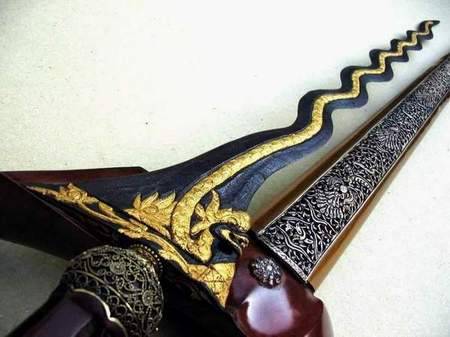




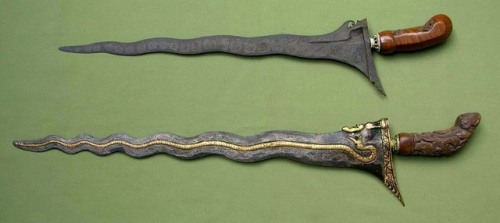

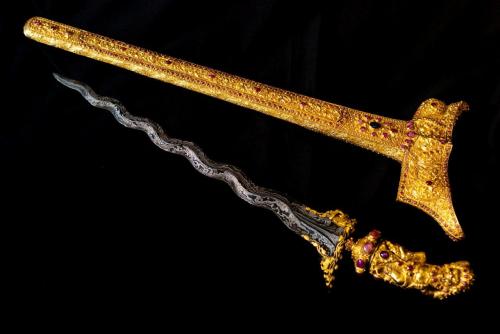
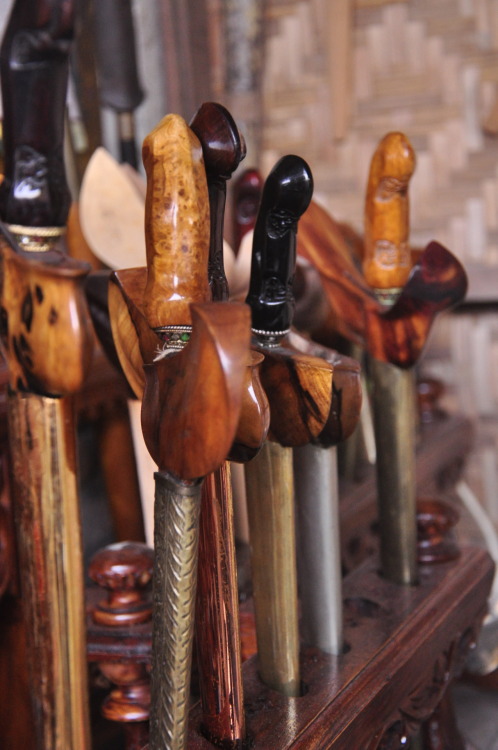
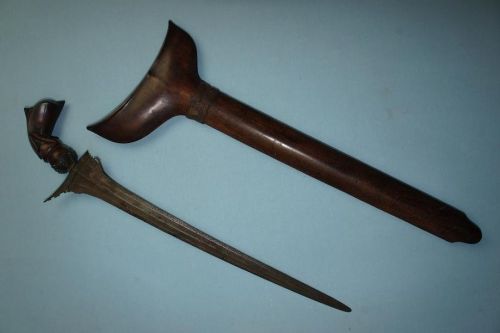
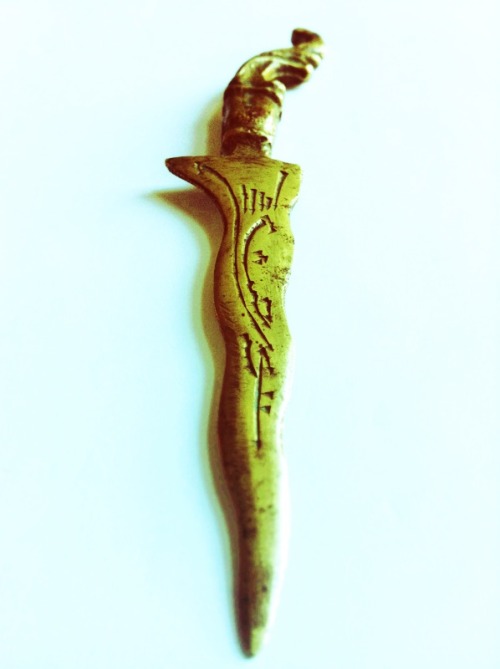
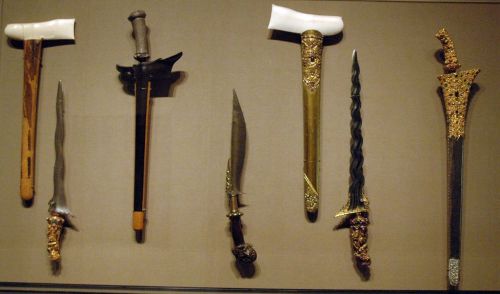
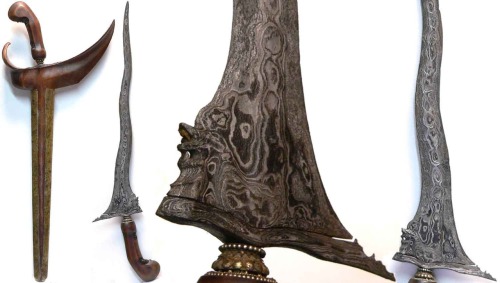
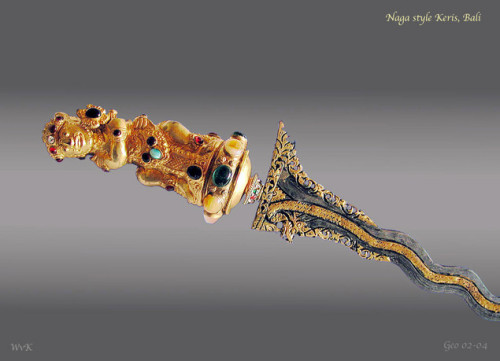
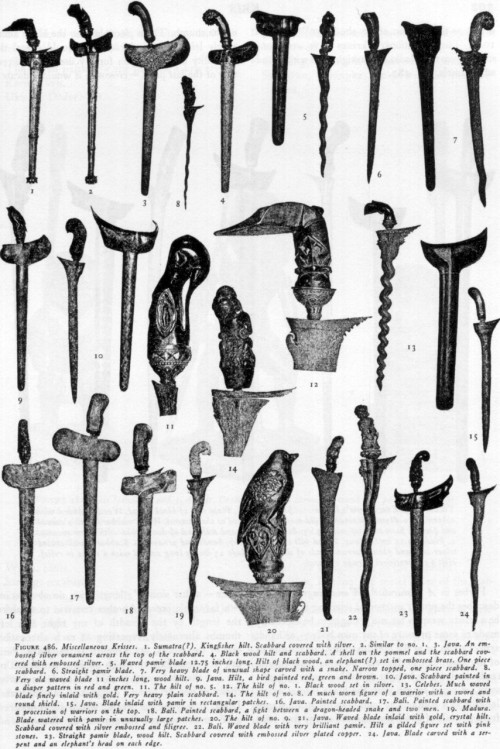
Badhe nyuwun pirsa mas, bab keris, utawi, dhuwung, utawi curiga, ingkang panjenengan andharaken nginggil kalawau kok saged panjenengan aken minangka tilaraning budaya bangsa Melayu, kamangka punika saking Tanah Djawa, tiyang Jawa punika benten lan boten saged kasamekaken kaliyan Melayu., lajeng sedaya keris nginggil punika nggadhahi tangguh pundi kemawon, pamoripun punapa lajeng kok greneng saha kembang kacang utawi lambe gajahipun memper plek dhuwung utawi keris saking tanah Jawa.... Maturnuwun.... Namo Budayo.. Om swastiastu.... mugiya rahayu ingkang samya pinanggih.
ReplyDelete